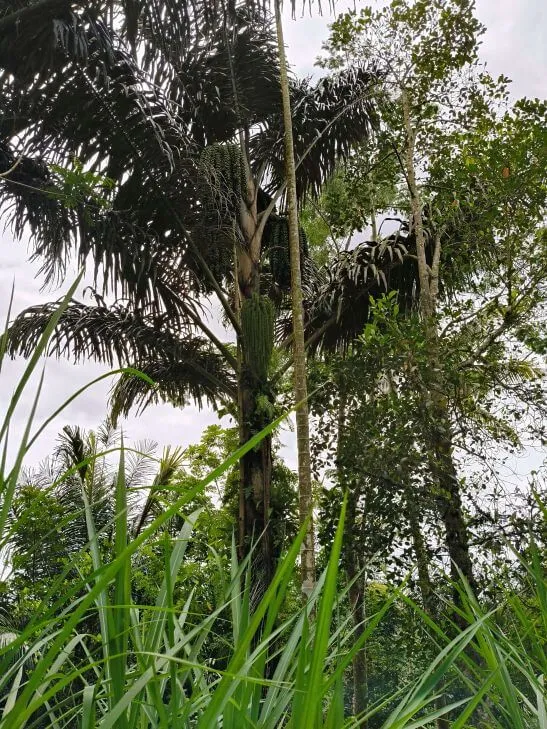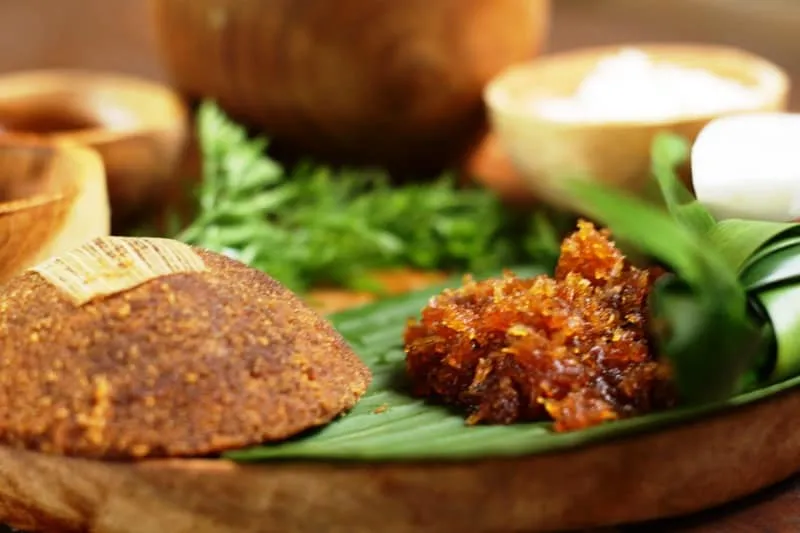Enau – Sugar Palm
Table of Contents
What is Sugar Palm?
The sugar palm (Arenga pinnata) is a multi-purpose palm tree native to tropical Asia. It’s known for its sweet sap, which is used to produce various products. The term “sugar palm” can refer to a few different palm species that produce sugary sap, but Arenga pinnata is the most common.
It’s a medium-sized palm with a robust trunk that can grow up to 20 meters tall. The trunk is typically covered in old leaf bases. It has large, feathery leaves. You’ll find sugar palms in tropical regions of Asia, including Indonesia, India, Malaysia, and the Philippines.

What We Get from Sugar Palms?
- Sweet Sap: This is the most important product. The sap is harvested by tapping the flowering stalks of the palm.
- Palm Sugar: The sap is processed (usually by boiling) to create palm sugar, a natural sweetener with a caramel-like flavor. Palm sugar is known by various names around the world (e.g., gula bali, gula aren in Indonesia, gur in India).
- Other Uses: The sap can also be fermented to make palm wine or vinegar.
- Other Products:
- Fruits: The sugar palm produces fruits that can be eaten when young (like kolang-kaling in the Indonesia).
- Fibers: The fibrous material from the tree (from the leaf bases) can be used for making ropes, brushes, and other products.
- Wood: The wood can be used for construction.
- Sago: Refers to starch extracted from various tropical palm stems. Sugar palm sago is a staple food in many parts of Southeast Asia, particularly in Indonesia and Malaysia. It is used in a variety of dishes, including:
- Sago porridge: A simple and comforting dish made by cooking sago with water or milk and adding sweeteners and flavorings.
- Sago pudding: A dessert made with sago, coconut milk, sugar, and sometimes fruits or other flavorings.
- Sago pancakes: A breakfast or snack made by mixing sago with batter and frying it like pancakes.
- Thickening agent: Cooked sago can be used to thicken soups, stews, and sauces.

Why is the Palm Tree Called the Tree of Life?
The palm tree has earned the title “Tree of Life” across various cultures and throughout history, and it’s easy to see why.
This moniker stems from the palm’s incredible versatility and the vast array of resources it provides, making it essential for human survival and well-being, particularly in tropical regions.
The palm tree is called the “Tree of Life” because it provides: Food and drink, Shelter and building materials, Fuel and other resources, Cultural and symbolic value.
How The Palm Sugar is Made?
The video is in Balinese, you can use the caption in English.
